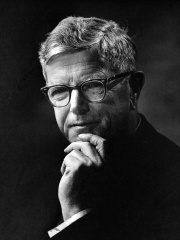
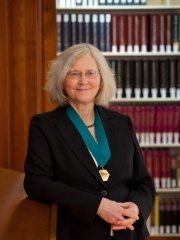

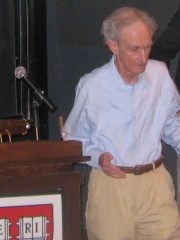
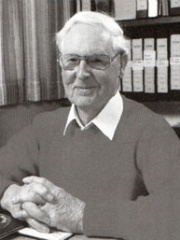

The Most Famous
BIOLOGISTS from Australia
This page contains a list of the greatest Australian Biologists. The pantheon dataset contains 1,097 Biologists, 7 of which were born in Australia. This makes Australia the birth place of the 21st most number of Biologists behind Belgium, and South Africa.
Top 7
The following people are considered by Pantheon to be the most legendary Australian Biologists of all time. This list of famous Australian Biologists is sorted by HPI (Historical Popularity Index), a metric that aggregates information on a biography's online popularity.

1. Macfarlane Burnet (1899 - 1985)
With an HPI of 77.22, Macfarlane Burnet is the most famous Australian Biologist. His biography has been translated into 57 different languages on wikipedia.
Sir Frank Macfarlane Burnet (3 September 1899 – 31 August 1985), usually known as Macfarlane or Mac Burnet, was an Australian virologist known for his contributions to immunology. He won a Nobel Prize in 1960 for predicting acquired immune tolerance. He also developed the theory of clonal selection. Burnet received his Doctor of Medicine degree from the University of Melbourne in 1924, and his PhD from the University of London in 1928. He went on to conduct pioneering research in microbiology and immunology at the Walter and Eliza Hall Institute of Medical Research, Melbourne, and served as director of the Institute from 1944 to 1965. From 1965 until his retirement in 1978, Burnet worked at the University of Melbourne. Throughout his career he played an active role in the development of public policy for the medical sciences in Australia and was a founding member of the Australian Academy of Science (AAS), and served as its president from 1965 to 1969. Burnet's major achievements in microbiology included discovering the causative agents of Q-fever and psittacosis; developing assays for the isolation, culture and detection of influenza virus; describing the recombination of influenza strains; demonstrating that the myxomatosis virus does not cause disease in humans. Modern methods for producing influenza vaccines are still based on Burnet's work improving virus growing processes in hen's eggs. For his contributions to Australian science, Burnet was made the first Australian of the Year in 1960, and in 1978 a Knight of the Order of Australia. He was recognised internationally for his achievements: in addition to the Nobel, he received the Lasker Award and the Royal and Copley Medal from the Royal Society, honorary doctorates, and distinguished service honours from the Commonwealth of Nations and Japan.

2. Elizabeth Blackburn (b. 1948)
With an HPI of 72.13, Elizabeth Blackburn is the 2nd most famous Australian Biologist. Her biography has been translated into 74 different languages.
Elizabeth Helen Blackburn (born 26 November 1948) is an Australian-American Nobel laureate who is the former president of the Salk Institute for Biological Studies. In 1984, Blackburn co-discovered telomerase, the enzyme that replenishes the telomere, with Carol W. Greider. For this work, she was awarded the 2009 Nobel Prize in Physiology or Medicine, sharing it with Carol W. Greider and Jack W. Szostak, becoming the first Australian woman Nobel laureate. She also worked in medical ethics, and was controversially dismissed from the Bush administration's President's Council on Bioethics. 170 scientists signed an open letter to the president in her support, maintaining that she was fired because of political opposition to her advice.

3. David Bruce (1855 - 1931)
With an HPI of 63.39, David Bruce is the 3rd most famous Australian Biologist. His biography has been translated into 24 different languages.
Major-General Sir David Bruce, (29 May 1855 – 27 November 1931) was a Scottish pathologist and microbiologist who made some of the key contributions in tropical medicine. In 1887, he discovered a bacterium, now called Brucella, that caused what was known as Malta fever. In 1894, he discovered a protozoan parasite, named Trypanosoma brucei, as the causative pathogen of nagana (animal trypanosomiasis). Working in the Army Medical Services and the Royal Army Medical Corps, Bruce's major scientific collaborator was his microbiologist wife Mary Elizabeth Bruce (née Steele), with whom he published around thirty technical papers out of his 172 papers. In 1886, he was chairman of the Malta Fever Commission that investigated the deadly disease, by which he identified a specific bacterium as the cause. Later, with his wife, he investigated an outbreak of animal disease called nagana in Zululand and discovered the protozoan parasite responsible for it. He led the second and third Sleeping Sickness Commission organised by the Royal Society that investigated an epidemic of human sleeping sickness in Uganda, where he established that tsetse fly was the carrier (vector) of these human and animal diseases. The bacterium, Brucella, and the disease it caused, brucellosis, along with the protozoan Trypanosoma brucei, are named in his honour.

4. Robert May, Baron May of Oxford (1936 - 2020)
With an HPI of 54.24, Robert May, Baron May of Oxford is the 4th most famous Australian Biologist. His biography has been translated into 20 different languages.
Robert McCredie May, Baron May of Oxford (8 January 1936 – 28 April 2020) was an Australian scientist who was Chief Scientific Adviser to the UK Government, President of the Royal Society, and a professor at the University of Sydney and Princeton University. He held joint professorships at the University of Oxford and Imperial College London. He was also a crossbench member of the House of Lords from 2001 until his retirement in 2017. May was a Fellow of Merton College, Oxford, and an appointed member of the council of the British Science Association. He was also a member of the advisory council for the Campaign for Science and Engineering.
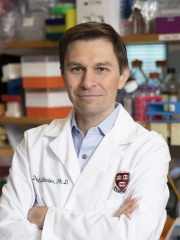
5. David A. Sinclair (b. 1969)
With an HPI of 53.05, David A. Sinclair is the 5th most famous Australian Biologist. His biography has been translated into 15 different languages.
David Andrew Sinclair (born June 26, 1969) is an Australian-American biologist and academic known for his research on aging and epigenetics. Sinclair is a professor of genetics at Harvard Medical School and the founding director of the Paul F. Glenn Laboratories for the Biological Mechanisms of Aging at Harvard. He is the co-author of Lifespan: Why We Age – and Why We Don't Have To.

6. Frank Fenner (1914 - 2010)
With an HPI of 48.77, Frank Fenner is the 6th most famous Australian Biologist. His biography has been translated into 16 different languages.
Frank John Fenner (21 December 1914 – 22 November 2010) was an Australian scientist with a distinguished career in the field of virology. His two greatest achievements are cited as overseeing the eradication of smallpox, and the attempted control of Australia's rabbit plague through the introduction of Myxoma virus. The Australian Academy of Science awards annually the prestigious Fenner Medal for distinguished research in biology by a scientist under 40 years of age.

7. Suzanne Cory (b. 1942)
With an HPI of 47.60, Suzanne Cory is the 7th most famous Australian Biologist. Her biography has been translated into 21 different languages.
Suzanne Cory (born 11 March 1942) is an Australian molecular biologist. She has worked on the genetics of the immune system and cancer and has lobbied her country to invest in science. She is married to fellow scientist Jerry Adams, also a Walter and Eliza Hall Institute of Medical Research scientist.
People
Pantheon has 7 people classified as Australian biologists born between 1855 and 1969. Of these 7, 3 (42.86%) of them are still alive today. The most famous living Australian biologists include Elizabeth Blackburn, David A. Sinclair, and Suzanne Cory. The most famous deceased Australian biologists include Macfarlane Burnet, David Bruce, and Robert May, Baron May of Oxford.
Living Australian Biologists
Go to all RankingsElizabeth Blackburn
1948 - Present
HPI: 72.13
David A. Sinclair
1969 - Present
HPI: 53.05
Suzanne Cory
1942 - Present
HPI: 47.60
Deceased Australian Biologists
Go to all RankingsMacfarlane Burnet
1899 - 1985
HPI: 77.22
David Bruce
1855 - 1931
HPI: 63.39
Robert May, Baron May of Oxford
1936 - 2020
HPI: 54.24
Frank Fenner
1914 - 2010
HPI: 48.77
Overlapping Lives
Which Biologists were alive at the same time? This visualization shows the lifespans of the 4 most globally memorable Biologists since 1700.

